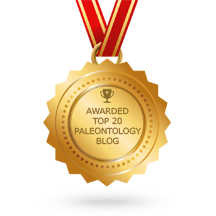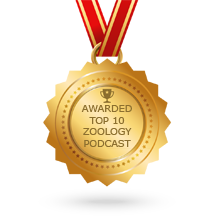A New Early Reptile With Bizarre Teeth From The Triassic of England
If there was a Period of Earth’s history that could be called ‘the one with the weird vertebrates’, it would be the Triassic. And if you don’t believe me, I ask you to turn your attention first to the erythrosuchids that had almost comically oversized heads, then to the massive dicynodonts who replaced their tusks with triangular projections from their skulls, and finally to the downright bizarre Atopodentatus that somewhat resembled a seal, a seal with a long-neck and harmonicas for jaws that is. There are sites all over the world where Triassic fossils can be found, from Svalbard in the arctic circle to the Transantarctic Mountains, and even in the UK. Multiple fissure fills (deposits of younger rocks in older rock units) across the Southwest of England and the South of Wales have produced a great number of fossils that collectively provide a window into ancient ecosystems of the Middle-Late Triassic. New species from these deposits are still being uncovered, with the most recent being Threordatoth chasmatos, a very peculiar creature, as is typical for the Triassic.
Threordatoth is a procolophonid parareptile, which is easier to explain than to pronounce. The parareptiles are among the most archaic of reptiles, that have historically thought to be a natural grouping (technically known as a monophyly) of several early subgroups of reptiles that distinctively vary in anatomy from modern reptiles. More recent research has questioned how these early reptiles are related to another as well as to today’s archosaurs and lepidosaurs, and we can now instead think of them as an assemblage of many of the first reptiles to evolve, and who’s place in the tree of life is currently ambiguous. Some of the most notable parareptiles were the mesosaurs, which looked like spindly crocodiles, and were likely the first aquatic reptiles. Another subgroup that will be familiar to fans of palaeo-art are the pareiasaurs, the largest of which, Scutosaurus, is often depicted as being preyed on by the giant gorgonopsid Inostrancevia.

While they might not seem like anything special at first, the procolophonids were the most successful of the parareptiles. They have been found on every continent, including Antarctica, and lasted some 60 million years from the end of the Permian to the end of the Triassic. The first procolophonids strongly resembled lizards in body shape and size and were likely insectivorous. While the later procolophonids would not get much bigger, many developed large spikes that erupted out of the sides of their cheeks, and fascinatingly, a few also evolved complex, multi-cusped teeth. This major change in tooth shape reflected a shift towards an herbivorous diet, which might have been why they were able to last until the end-Triassic mass extinction. It is among these advanced procolophonids with adaptations for a diet heavy on greenery that we find Threordatoth.
Although not known from a complete skeleton, Threordatoth is represented by numerous fragments of jaws with teeth embedded within. The distinct anatomical traits that differentiate it from every other advanced procolophonid can be found within the upper jaw fragments, justifying the erection of a new genus and species. These traits relate to the number of teeth, the anatomy of the cusps of the teeth, the position of certain foramina (small holes for nerves and blood vessels to pass though) along the jaw. Based on its close relatives, we can guess that it too had the large spikes emerging from the sides of its face, and that it was probably no larger than an iguana.

And what might be its gnarliest bit of anatomy is the fusion of the teeth to the jaw. Many animals, including ourselves, have a soft tissue (the periodontal ligament) that locks the teeth into their sockets, and allows for stresses generated by bites to dissipate more easily from the teeth to the jaws. The lower jaw of Threordatoth is peculiar as well, as the parts where the front tips of each half of the lower jaw meet are quite featureless, which is also unlike other advanced procolophonids and suggests a flexible symphysis (the connection between each half of the lower jaw). The flexible symphysis might have been an adaptation for dissipating stresses along the lower jaw, somewhat making up for fusion of teeth to the jaws. It also would have facilitated a greater freedom of movement for each half of the lower jaw, a trait that the modern Tuatara relies on for shearing food. The unique jaws and teeth of Threordatoth indicate it fed in ways unlike other procolophonids, and other parareptiles more widely, but it’s unclear how exactly. While its weird anatomy and mysterious lifestyle is bizarre by the standards of the modern day, such strangeness is right at home in the Triassic.
To learn more about how Threordatoth was discovered and studied, I got to interview the lead researcher of the new paper describing the critter: Dr Luke Meade, a postdoctoral researcher at the University of Birmingham.
Q1. Where and when was the Threordatoth material discovered? Were you involved in the original collection of the material from the field?
A1. The material is from fissure fills in Cromhall Quarry, Gloucestershire. Fossils have been found from these fissures since the 1930’s and represent lots of different groups including rhynchocephalians, drepanosaurids, the gliding reptile Kuehneosaurus, aetosaurs, crocodylomorphs, and dinosauriforms. Much of the material that includes Threordatoth was collected in the 1980’s by our co-author Dr. Nick Fraser and is spread across a few different museum collections.
Q2. What do you think was the best part of naming and describing this new species? Is it anything related to the scientific process behind the work?
A2. The material of Threordatoth is really nicely preserved tiny little bones—some of which look as if the animal could have died yesterday! It’s also the case that, although we only have a few isolated elements, these few bones show an interesting suite of characters that are really distinct and likely have functional implications. Its fun to speculate what these may have meant for the animal’s diet and ecology.
Q3. Now for the opposite question, what was the worst part about naming and describing this new species?
A3. These tiny fossils are unfortunately small, fragile, very difficult to photograph, and require great care and patience to work with. Luckily, we had facilities available to CT-scan many of the more delicate pieces, rather than risking breaking them by handling them for study and photographing. Our picture of the whole animal is also frustratingly incomplete—we only have a single bone each from the skull and lower jaw (maxillae and dentaries, though many examples of each). This leaves a lot of unanswered questions!
Q4. What do you think about the current state of parareptile research, in particular the shakeups of their systematics in recent years?
A4. Parareptiles are a diverse group of weird animals, and I expect our understanding of them will continue to change and develop for a long time. Procolophonids seem to be the last stand of the group though, perhaps latest surviving parareptiles.
Q5. Do you hope to keep working on procolophonids in the future, and if so, what sort of topics concerning them do you think should be researched?
A5. I may pick back up with procolophonids if some interesting new stuff comes out of the fissures! I think there is also quite a bit that could be done with digital methods to further explore dietary diversification and feeding biomechanics throughout the group. This would have been interesting to investigate in Threordatoth if we had more of the skull…
Q6. How can others, especially prospective research students, get involved in researching the anatomy and systematics of early reptiles?
A6. There lots of unstudied/little-studied fissure fill material from Cromhall and elsewhere present in multiple museum collections, some of which has not even been processed from bulk samples. There is also more and more 3D digital data for early reptile fossils appearing in data repositories online, waiting for someone to use it to answer interesting questions.
Hady George is a palaeontology PhD student at the University of Bristol researching the jaws of the earliest tetrapods among other things, and seemingly always has a pop science book somewhere in his bag.
Cover image: Artwork depicting a life reconstruction of the newly described procolophonid reptile Threordatoth chasmatos by Mark Witton.


















